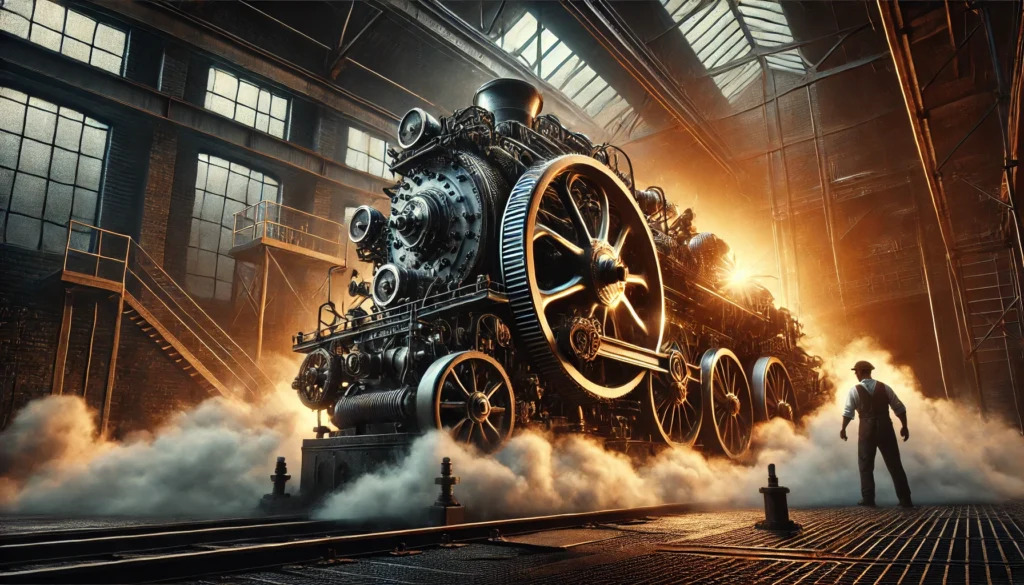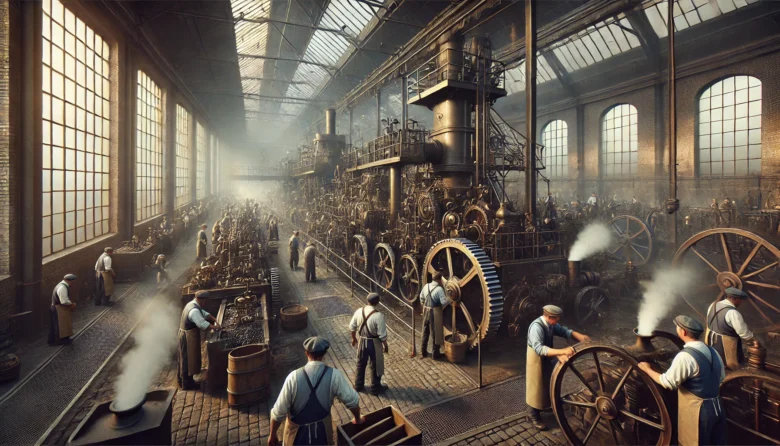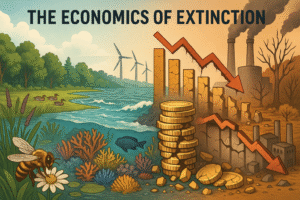Fun Fact: Did you know the steam engine, a cornerstone of the Industrial Revolution, was originally invented to pump water out of coal mines?
The Industrial Revolution, often described as the most transformative period in human history, profoundly changed the way societies function. This era, spanning the late 18th to early 19th centuries, introduced technological innovations that shifted economies from agrarian to industrial powerhouses. But how exactly did the Industrial Revolution shape modern economies, and what lessons can we learn from it today? Let’s dive into history to explore this fascinating journey and understand its relevance to our world.
The Foundations of Industrial Growth
The Industrial Revolution began in Great Britain, a country rich in coal and iron—essential resources for industrial growth. But it wasn’t just about resources; it was also fueled by key inventions like the steam engine by James Watt and the spinning jenny by James Hargreaves.
Case Study: The Textile Industry Boom
One of the first sectors to be revolutionized was textiles. Before this period, fabric production was a painstakingly slow process handled by artisans. The spinning jenny and, later, the power loom mechanized these tasks, increasing output dramatically. This shift not only boosted Britain’s economy but also created a template for other industries to follow.

Urbanization and Its Economic Impact
As factories sprouted, rural workers flocked to cities in search of jobs, giving rise to urbanization. Cities like Manchester and Birmingham became industrial hubs, showcasing both the opportunities and challenges of rapid economic growth.
Lessons for Today:
- Infrastructure Investment: Just as Britain built railways to support industrial transport, modern economies must invest in infrastructure to sustain growth.
- Workforce Upskilling: The migration from farms to factories highlighted the importance of reskilling labour, a lesson applicable today in the face of automation.
Global Trade and the Expansion of Markets
The Industrial Revolution also expanded global trade. Improved transportation systems like railroads and steamships allowed goods to be exported efficiently. British manufacturers gained access to international markets, which further accelerated economic growth.
Anecdote: The Tea Trade
Tea—a symbol of British culture—became more affordable due to mass production and faster transportation. This accessibility not only bolstered domestic consumption but also strengthened colonial trade ties.
Social Implications and Economic Inequalities
The Industrial Revolution generated significant wealth but also exacerbated economic disparities between the wealthy and the working class. Factory workers faced harsh conditions and low wages, sparking early labour movements.
Relevance Today:
The labour reforms introduced in the aftermath—like shorter work hours and better wages—remind us of the need for inclusive economic policies. As we navigate the Fourth Industrial Revolution, striking a balance between innovation and equity remains crucial.
Technological Innovation as a Catalyst
From mechanized looms to the telegraph, technological advancements during this period set the stage for modern economies. They demonstrated how innovation drives productivity and economic expansion.
Modern Parallel: The Digital Economy
Similar to how steam power revolutionized 19th-century industries, digital technologies such as Artificial Intelligence (AI) and blockchain are transforming the modern economic landscape. History teaches us that embracing change is key to staying competitive.
Environmental Costs and Sustainability Lessons
One overlooked aspect of the Industrial Revolution was its environmental impact. The extensive use of coal led to air and water pollution, a challenge we continue to face today.
Lesson for the Future:
Investing in clean energy and sustainable practices is essential to mitigate the ecological costs of industrial growth. The shift from coal to renewable energy mirrors the transition economies faced during the Industrial Revolution.
Conclusion
The Industrial Revolution not only transformed economies but also laid the groundwork for modern society. From technological innovation to global trade and labour rights, its legacy continues to influence us. As we tackle the challenges of today’s rapidly changing world, the lessons from this pivotal era remind us of the power of adaptability, innovation, and inclusivity.
Let’s carry these lessons forward as we shape the future of our economies, striving for growth that benefits all while protecting our planet.
Author’s Note:
Thank you for joining me on this exploration of history and its relevance to modern times. The Industrial Revolution’s story is a reminder that progress comes with responsibility. Let’s learn from the past to create a brighter, more sustainable future.
G.C., Ecosociosphere contributor.
References and Further Reading:
- History of the Industrial Revolution
- The Economic Impact of the Industrial Revolution
- Industrial Revolution | 2.2K plays | Quizizz. https://quizizz.com/admin/quiz/5ca63944fcda00001a8041f9/ap-wh-industrial-revolution
- Collective Bargaining Chronicles: From Industrial Struggles to Modern Triumphs in Labor Relations. https://www.legalserviceindia.com/legal/article-14811-collective-bargaining-chronicles-from-industrial-struggles-to-modern-triumphs-in-labor-relations.html





Comments
We are walking with my life risks to loos each other chemicals
you’re really a good webmaster. The web site loading speed is amazing. It seems that you are doing any unique trick. Moreover, The contents are masterpiece. you have done a excellent job on this topic!